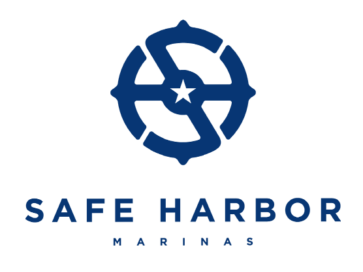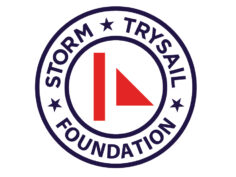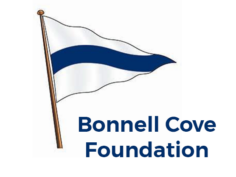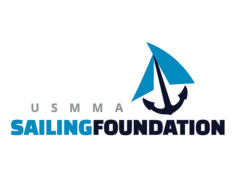Each of the Breakout Groups developed specific recommendations to improve safety-at-sea training and education. Following the OSLS, the organizing committee met with the Breakout Group Facilitators and Scribes to review the recommendations. That group produced an additional set of general recommendations. All of these recommendations are presented in full below. From these recommendations, the Proposed Leadership Training Changes, organized by deployment methods and venues, was produced.
The complete Descriptions and Situations follow: (click a Breakout Session title to jump to that section below)
- General Recommendations
- A. Character
- B. Responsibility and Accountability
- C. Team Leadership Roles and Followership
- D. Communication
- E. Preparation & Anticipation
- F. Sail the Way You Train, Train the Way You Sail
- G. Situational Awareness
- H. Emergency Management
General Recommendations
- Develop a Bridge Resource Management module (web-based, classroom, and/or practical) to help translate commercial and military Bridge Resource Management practices to managing a sailboat.
- For Adult SAS – pre-assign and announce groups about 1-2 weeks ahead of time. Assign a Leader and ensure introductions happen. A pre-event Zoom, if short, scripted, and to the point, would make the SAS day more effective – but much benefit could be derived even if you don’t meet as a group. For the practical portions of SAS, have the group work out Station Bills as an exercise before arrival. Consider assigning a SAS Coach ‘mentor’ to guide this process.
- Incorporate 5–10-minute Leadership segments into each of the seminar sessions, covering the eight Breakout topics. Include table-top group exercises for the Hands-On sessions. Practical Leadership could be incorporated into the survival swimming and life raft sessions in the pool. Consider assigning roles in advance (Zoom session) or hand out assignments and checklists on the pool deck. This would get the point across that an emergency evolution requires teamwork and pre-assigned tasks for each crew member. It would also make the exercise more realistic if the navigator grabs the EPIRB, tactician gets the grab bag, the cook retrieves the emergency food/water bag, medics get the first aid kit, and designated Leaders provide oversight and determine when to abandon ship.
- The Culture of Safety ethos expressed in the Moderator’s closing summary should stress that Leaders go back and practice what they’ve learned at SAS seminars with their own crew on their own boat.
- Have a separate land session for Skippers/watch captains/navigators to discuss Leadership responsibilities and best practices in their roles.
- Promote Safety-at-Sea Seminar attendance for race delivery crews when advertising the event. Organizing authorities can also promote this practice.
- Develop/expand web-based multi-media reference material using existing or new training videos, checklists for Leaders and also for members of the team to practice in their assigned areas for different safety scenarios. Contents could include:
- Planning and organization tools/samples. For example: Watch Bills, event-specific Station Bills, vessel damage control fittings/equipment locations aboard, stowage plan, check lists, “protocols”, post-drill/post-emergency ‘lessons-learned’/debrief summary.
- Safety Scenarios and suggested Drills (rig failure, hull breach, COB, fire, flooding, abandon ship).
- Compendium of OSLS-derived Best Practices.
- Post-event lessons learned accident analysis. Develop an app for use afloat.
- Leadership education material (books, articles, movies, instructional videos).
- Other useful courses – NOLS, NOLS Wilderness Medical Training, Commercial Sailing Training Courses.
- Sea Stories – record sailors telling stories.
- Develop an app or web form that walk Skippers through the drills they should run with their crews following an SAS event with room to capture responses, pictures / videos, and timestamps to show completion.
- Marketing: Remember we are doing it with amateurs and volunteers. Most people are here to have fun and therefore need to keep safety from being too complicated. Engage sailors with the message that safety is good for them, the crew and the boat.
- Consider demographics as we look at changes. Check with US Sailing or our own post-course surveys. The vast majority of STC SAS course attendees are weekend sailors interested in improving their sailing skills; but who may also be preparing for a once-in-a-lifetime offshore experience. The usual attendee is not a professional sailor. In addition, most of the attendees are Leaders in some field other than sailboat voyaging or racing. Most sailors taking an SAS course want to improve their understanding of the mechanics of safety on their boats.
- Course Modification Considerations. Attendees have other time commitments,, and we should be careful to make effective use of what we require prior to the seminar. Remember that the military academies employ an entire four-year program to attempt to develop Leadership in their students – we’re hoping to do it in one day or weekend. Luckily our students are older, more seasoned individuals than a high school graduate and thus have a deeper life experience to draw upon.
- Identify sailing Leaders very early and expose them to the Leadership skills that can be taught, such as: listening, communications, delegation, organization, respect, continuous learning, and positive mental attitude. It is hard to teach integrity, honesty, vision, resilience, courage, passion, humility, and empathy).
- Teach the instructors (Leadership program for junior instructors, community boating and camp sailing instructors) how to identify and encourage students who have Leadership potential. This could entail building Leadership into the US Sailing Level II instructor training curriculum.
- Develop a Leadership toolkit: short videos, papers, curriculum guides, and reading resources to assist sailing instructors.
- Pre-SAS Seminar, provide 2-3 short videos on lessons learned from good Leaders.
- Host a twice annual (Fall and Spring) On-the-Water Safety Event - Bring your own Boat and Crew
- Boats sail around a pre-set course and need to execute specific maneuvers on each lap (e.g. COB, Abandon Ship).
- Coaches on the water, videotape maneuvers.
- Pre-briefing and post-briefing with a tent party afterward.
- Give out prizes for some of the best executed maneuvers, most improved.
- Give out a virtual (or paper) goody bag for offshore races including a post-race reflection guide for the Skipper and other roles. Include aspects of Leadership we focused on in the OSLS in the self-reflection form. Make it both a self-reflection form and a guided discussion document for crews to encourage Leaders (Owners/Skippers) to take on the responsibility of having a meaningful conversation around improving safety for the next offshore venture.
- Establish a peer-to-peer coaching culture/buddy system, a mentoring system, especially focused on newer Owners and Skippers getting into offshore races. Provide some structure to what those discussions might include, which would cover safety and preparation, but also Leadership topics more broadly.
A. Character
- Include identification of the six elements of high character in offshore Leadership (presented in the best practices) in SAS training (Junior and Senior). These are Integrity, Empathy, Humility, Decisiveness, Resilience, and Self-Awareness.
- Develop a specific character assessment program geared to help the SAS student (Junior and Adult) understand their own Leadership style as applied to sailing situations (and with respect to the six elements of high character). Such an assessment should be completed before the in-person SAS. This would allow the moderator’s introductory remarks to be better understood in the context of SAS by the regular sailor.
- Consider adding an overnight component to SAS to allow more intense Leadership training in a short period of time. While this may be impractical for the majority of SAS students, this could be a nice addition for the advanced level students. It could even be a small revenue stream for the College Offshore Sailing Circuit (COSC) boats where each student would pay part of a charter fee for the overnight session.
- Develop a new video or set of videos that portray scenarios which display both good and bad Leadership. As we develop the character assessment program the script for a video should become more obvious and should include the six identified traits of high character. Videos and articles could portray example scenarios that display both good and bad Leadership character. This would be couched in terms of Transformational and Transactional Leadership traits as applied aboard a sailing yacht.
B. Responsibility & Accountability
- Include a session on responsibility and accountability in Adult Safety-at-Sea seminars for all offshore participants. Agenda items could include:
- How to prepare for emergency situations with respect to clearly identifying roles and responsibilities (i.e., fire, flooding, dismasting, etc.).
- Responsibility for good navigation and preparation with respect to understanding the conditions, weather, and waters through which the race/voyage will be sailed.
- Include a component of responsibility and accountability in Junior SAS providing a basic knowledge of the responsibilities of each person on the boat.
- Develop a Leadership course and pamphlet specifically for Skippers and watch captains (Level 300?) that focuses on responsibility and accountability. Consider making this mandatory for certain events. Course could be “hands-on” and “bring your own boat and crew”. Agenda items could include:
- The range of responsibilities that an Owner/Skipper is accountable for when sailing offshore
- Formulate a list of ideal characteristics in a Leader (see below)
- Responsibility for crew selection
- Responsibility for preparation of boat & crew, including the right set of briefings, delegation of authority, expectations for equipment, etc.
- Defining a chain of command
- Setting a culture of open communications and empowerment
- Enthusiasm and positivity, especially in trying situations
- As an exercise in the Leadership component of SAS training, have students formulate a list of ideal characteristics in a Leader. As a starting point, we liked a U.S. Marine PowerPoint slide from the first Panel entitled, “Lead with Honor”. It lists 14 Leadership traits: JJDIDTIEBUCKLE: Justice, Judgment, Dependability, Integrity, Decisiveness, Tact, Initiative, Enthusiasm, Bearing, Unselfishness, Courage, Knowledge, Loyalty, Endurance. There are other such lists (try Wikipedia – not bad). It is important to recognize that no Leader is the whole package. If the entire crew is engaged, its strength may be greater than the sum of the pieces – loosely quoted from a presentation by Capt. Mark Lenci (USN, ret.). A principle for continuous improvement: “Do not make the same mistake twice” (Admiral Hyman Rickover).
- Identify Leaders early. The sport of sailing could be improved by identifying Leaders early. We should urge Leadership training in junior programs and begin to be aware of potential future Leaders for further training as young people mature. This presumes that some people have more potential as Leaders, and mentoring them can spread the benefit to others as well.
C. Team Leadership Roles and Followership
- Integrate Tabletop Exercises into SAS training. They can be done effectively remotely (e.g. via Zoom).
- Within SAS training, incorporate discussions on delegation of Leadership roles and identifying subject matter experts within a team.
- Within SAS training, include a practical exercise on making a Station Bill and identifying the roles on board in each emergency situation. Perhaps submitting a Station Bill for their team could be a part of the pre-work done by a crew before coming to a STC seminar.
- Consider making a station bill a mandatory document for certain offshore events
- Within SAS Training, demonstrate incident reporting (and near misses) from high level sailors and programs to help encourage a culture shift towards self-analysis and sharing lessons learned.
- Challenge male STC members and SAS seminar participants to think critically of their actions and responses to women in Leadership roles. As an organization, work to identify women with strong experience and potential to include in planning, teaching, development, and mentoring of others.
- Ensure we have women coaches at Junior and Adult SAS Events.
D. Communication
- Develop and include an SAS segment on communication. A possible schedule for a 60-minute session:
- 20 minutes to present core concepts (20-30 slides, information drawn from content in best practices)
- 5 minutes to describe group project, assigning each team a situation that requires good communication. This could be done several ways. One would be to give the team a simple task, and then have them describe what is most critical about how the communication occurs. The other would be to give them an example of bad communication technique and ask the team to correct it.
- 10 minutes for teams to meet and decide on a plan of action. Teams sized according to total number. Aim for 6 persons and about 6 teams. Adjust as necessary.
- Don’t give them too much time to work on this. We’re focusing on concepts, not perfection.
- 20 minutes to present to the class and get feedback.
- What did they do well?
- How might they improve? Did they miss anything?
- If you had been the receiver, would you have gotten the information correctly?
- 5-minute wrap-up.
- Train on the essentials of clear “command/task” communication afloat – which include identification of message receiver (name/position), complete and clear language/sentences, use of boat/sport standard terminology, and use of repeat back/acknowledgments.
- Train on the importance of clear goal-setting and pre-briefs, and when pre-briefs are relevant. Pre-race/voyage, weather/course updates, changes of plans, pre-maneuver. Discussion of appropriate communication skills for these events – to include clarity, honesty, and appropriate time for questions and feedback.
- Train on the importance of post voyage/race/event/maneuver debriefs – to include openness to admit error and ability to look for improved procedures and processes.
E. Preparation & Anticipation
- Use scenarios, role playing, and lessons learned from past accidents either as an individual challenge or a group task:
- An example of an individual challenge: You get a last-minute call to join a crew on X race. You have never sailed on the boat before and you only know 1 other person on board. How do you familiarize yourself with the boat, the crew and the captain?
- An example of a group challenge: The group plays out the key positions on a boat. You, as a crew, are getting a boat ready for a Bermuda race. What do you focus on? Now you are a quarter of the way through the race, the navigator sees the latest weather showing a storm is moving in. Who is told what, what does everyone do to prepare?
- Use storytelling. Stories are effective means of communicating lessons. For example: “This is what I learned from X incident and why I keep X piece of safety equipment on the boat instead of Y piece of safety equipment.”
F. Sail the Way You Train, Train the Way You Sail
- Use actual cases in SAS Training. Planning, preparation, practice and critical thinking are key elements of safety in offshore sailing. The Leader needs to implement these elements as part of the safety ethos on their boats. Moderators could include this in the ethos portion of the course and work into other SAS topics. Teach Operational Risk Management. This is a process a Leader can implement to help prevent problems in the first place, and managing them when they do.
- Use fun and instructional training exercises like trying to speak with a mouthfull of a peanut butter and jelly sandwich to practice clear and concise for communications, and the marshmallow challenge to build for collaboration and teamwork during Jr SAS Seminars. Both of these exercises can be found online.
- Medical requirements should be scaled to the availability of nearby help.
- Safety inspectors/scrutineers for offshore events ensure compliance but are also educators and need to make sure each team is prepared not just with equipment, but that they have trained and know what to do in specific emergencies. Sir Robin told the story of being a scrutineer for the Whitbread and asking if the crew knew how to steer without a rudder.
- Set training/practice goals using the SMART (Specific, Measurable, Attainable, Relevant, and Time-Based) methodology.
- Recommended Leadership reference books: Sailing True North: Ten Admirals and the Voyage of Character by Admiral James Stavridis. Call Sign Chaos by General Jim Mattis.
G. Situational Awareness
- Use actual cases in SAS Training. In the past, we have been very reluctant to use actual cases, as we do not like to second-guess our fellow Skippers, especially when lives have been lost. Nonetheless our group felt that Leadership, especially situational analysis, is best taught through case studies of actual incidents. (See links to World Sailing, US Sailing, and Mariner’s Alerting and Reporting Scheme (MARS) in Appendix 4, Resource References)
- Leadership training: keep the crew together. Leadership, particularly situational awareness, relies heavily on good Bridge Resource Management, especially communication among the parties and the ability to speak up if something appears wrong, including a decision. For on-the-water training activities, urge sailors to practice in their own boats with their own crew.
- Practice onboard problem situations, as actions done repetitively are shown to require significantly less brainpower to execute – especially in extremis – than new actions. This is essential because stress decreases one’s ability to think and process information, thus practice/repetition will lead to better responses in actual situations.
- Crews already have many tools for situational awareness and decisions, e.g., a polar showing the proper sail to select, or watch orders, such as “Call the navigator if the wind backs more than 10 degrees”. Publish a model/standard situational awareness planning and decision-making mental flowchart like the one previously discussed. Include example decision gates, go/no go criteria, pre-planning assumptions and when to change decisions.
H. Emergency Management
- Incorporate incidents and stories. Storytelling is a well-known means of effectively communicating a point or lesson. It is not new (think parables in the Scriptures) but it is often overlooked. Narrated "debriefs' on yachting accidents could be very effective. The Emergency Management Group offered this story from the 12/8 Vendee Globe news stream - Fear Cannot Take Control (https://www.vendeeglobe.org/en/news/20886/pip-hare-fear-cannot-take-control). It is from Pip Hare aboard Medallia, as she skirted the Antarctic Ice Exclusion Zone at the longitude of The Cape of Good Hope. Pip Hare’s account is a perfect example of the Emergency Management Strategy of STOP, THINK, EXECUTE when facing a situation of fear leading to potential panic. For the instructors, telling this story (or perhaps have a video of Pip telling it) allows the participants to immerse their imagination in the potential for imminent disaster while hearing tangible steps to mitigate the fear, make a plan. and act on it until the situation is resolved.
- Teach the STOP-THINK-EXECUTE mantra as a guiding principle in managing fear and mitigating panic. Details are in “Best Practices”. Participants, working in small groups should create (or be provided with) an emergency scenario for which they must game-out a resolution using this technique.
- Teach Micro Leadership, Calm Group Dynamics, Heads Down (and Up) Action - an awareness and focus of each individual crew member on their tasks while keeping an eye out and maintaining situational awareness. This could be taught/trained as a group exercise when the group size was similar to an offshore crew (8-12 people). Describe a scenario and devise a plan which includes “domain Leaders” (think foredeck vs. medical vs. mechanical) Let people sort themselves into subgroups and work on a portion of the plan while others attack other priority actions. See the example of Gambler in Best Practices.







